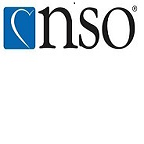

Nurses can enhance patient understanding of and adherence to their overall treatment plans by strengthening communication, rapport, and education.
It Starts with Communication
Asking the right questions and opening the lines of communication between patient and nurse can uncover critical barriers to treatment compliance.
Encouraging Cooperation and Participation
Explain to patients that they must take some responsibility for the outcome of their care and treatment. Let them know that everyone caring for them wants them to be successful in regaining their health.
Helping Patients Manage Logistics
Sometimes a patient’s noncompliance issue is out of their hands due to a lack of personal support at home or financial restraints. Uncover where those patients are struggling:
Supporting the Effort with Documentation
To help staff deal with hostile, manipulative, or uncooperative patients, written protocols should be in place to help all staff respond to and deal with difficult patients and unacceptable behavior, such as belligerent voicemail messages or yelling at staff. This should also include ways to document and procedures for such common concerns as repeated prescription refill requests of questionable nature, appointment or procedure cancellations, and neglecting to take medications, do exercises, or make necessary lifestyle changes.
Monitoring Compliance
Driving patient compliance often means health care teams need to repeat themselves again, and again, and again. Different tools can help nurses drive compliance, such as telephone and/or email reminders, and making a point to schedule follow up and referral appointments before patients leave the facility. Nurses should also document no-shows and conduct telephone follow-up within 24 hours.
Know if there is a written policy for terminating the patient-provider relationship if the patient is chronically noncompliant and fails to respond to reminders and other messages.
Keep at It
Patient noncompliance is a deep issue with no easy answers or simple solutions. Nurses in almost any setting will encounter noncompliant patients, but with consistent communication and a persistent, but cooperative, spirit nurses can work to overcome the risk of noncompliance one patient at a time. Nurses also can explore Nurses Service Organization’s patient self-assessment checklist to help facilitate open communications.1
Resources
Adapted from Breaking Barriers to Patient Compliance by Jennifer Flynn, CPHRM, which originally appeared in Minority Nurse, and is used with permission from Nurses Service Organization (NSO).
Jennifer Flynn, CPHRM, Risk Manager, Nurses Service Organization, Healthcare Division, Aon Affinity, Philadelphia. Phone: (215) 773-4513. Email: Jennifer.Flynn@aon.com.
This risk management information was provided by Nurses Service Organization (NSO), the nation's largest provider of nurses’ professional liability insurance coverage for over 550,000 nurses since 1976. ARIN endorses the individual professional liability insurance policy administered through NSO and underwritten by American Casualty Company of Reading, Pennsylvania, a CNA company. Reproduction without permission of the publisher is prohibited. For questions, send an e-mail to service@nso.com or call 1-800-247-1500. www.nso.com.